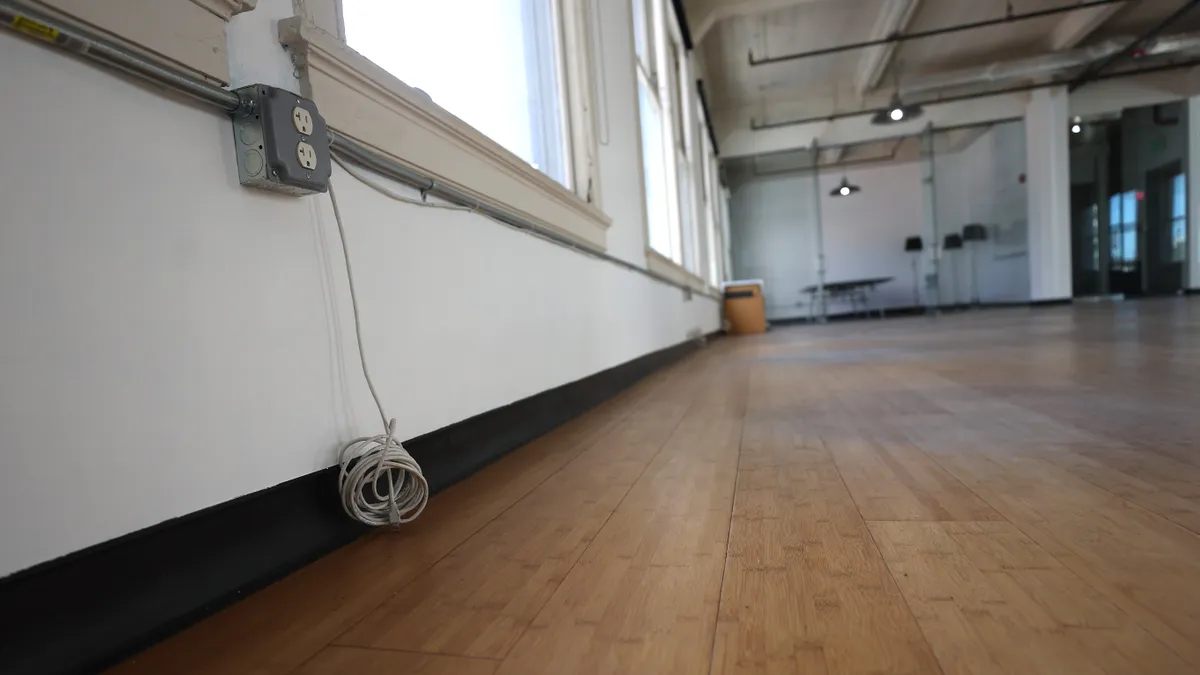Delays implementing return-to-office plans and questions around companies’ longer-term real estate footprints are straining the office category of regional banks’ commercial real estate portfolios, executives said in Philadelphia last week.
Economic risks stemming from the knock-on effect of the drop in office occupancy are being watched closely by policy makers, with Federal Reserve Chair Jerome Powell warning last month that losses in the CRE market will mostly harm small- and medium-sized banks.
Nearly a year after the World Health Organization declared the end of the global COVID-19 emergency, regional bank executives are still grappling with the fallout from the rise of remote work and its impact on their office portfolios as office building occupancy rates still trail pre-pandemic levels.
“There's been a Frankenstein from the pandemic that's been created, and we don't know how to stop it…how do you get [people] back into the city?” Gregory Carlisle, commercial market president for south and central New Jersey at TD Bank, said at an event hosted by the Philadelphia Business Journal. “If I specifically look at Philadelphia, the office asset base is the one that suffered the most.”
TD Bank Group, a Toronto, Canada-based financial firm, has a U.S. retail banking arm based in Cherry Hill, New Jersey. The office category is about 1% of TD’s overall CRE portfolio, CFO Kelvin Tran has previously said.
Executives speaking at the Thursday event — from a range of banks including TD, OceanFirst Bank, Truist and Citizens Bank — highlighted that the office category is a small component of their overall CRE portfolios. Sufficient loan-loss reserve coverage will ensure anticipated losses can be addressed, executives said.
Despite the bankers’ optimism in being able to manage office CRE losses, executives acknowledged that return-to-office scenarios and plans to trim office real estate footprints still need to be executed.
“Office has been the concern because they have the same challenges that other real estate properties have with high rates, and inflation, on operating expenses,” said Bruce Van Saun, CEO of Citizens Bank. “This return-to-office phenomenon has kind of been the extra burden that… the general office segment has to work through, because many companies are rethinking what their true real estate needs are going forward.”
In the fourth quarter, the value of Citizens’ CRE portfolio fell 3% quarter over quarter to $3.6 billion, driven by paydowns and charge-offs, according to the bank’s earnings presentation.
Citizens’ office portfolio — about 70% suburban, with mostly Class A or Class B buildings — also minimizes risks, Van Saun suggested. Other parts of the bank’s CRE portfolio, including multifamily, industrial warehouses and retail are performing well, he said.
“If you have good buildings, and they’re more suburban… and the tenant rosters are good, you'll tend to have better outcomes than others,” he said. “We’ll take some losses, but it will be manageable.”
Looking beyond CRE implications, return-to-office initiatives are important drivers for continued economic growth of urban areas, executives said.
The challenge will be to incentivize workers and companies to return to office environments when they’ve been accustomed to remote work for years.
“They don’t want to deal with either the congestion or the traffic or the cost of parking, or stuff like that,” said Carlisle. “How do we get people to come back? I don’t know what the answer to that is. I think that might be at the local government level,” through tax incentives or other programs, he noted.
Nationwide, the office vacancy rate hit a record high of 19.6% in the fourth quarter of last year, breaking the previous record touched both in 1986 during a period of inventory expansion as well as in 1991 during the savings and loan crisis, according to Moody’s Analytics.











